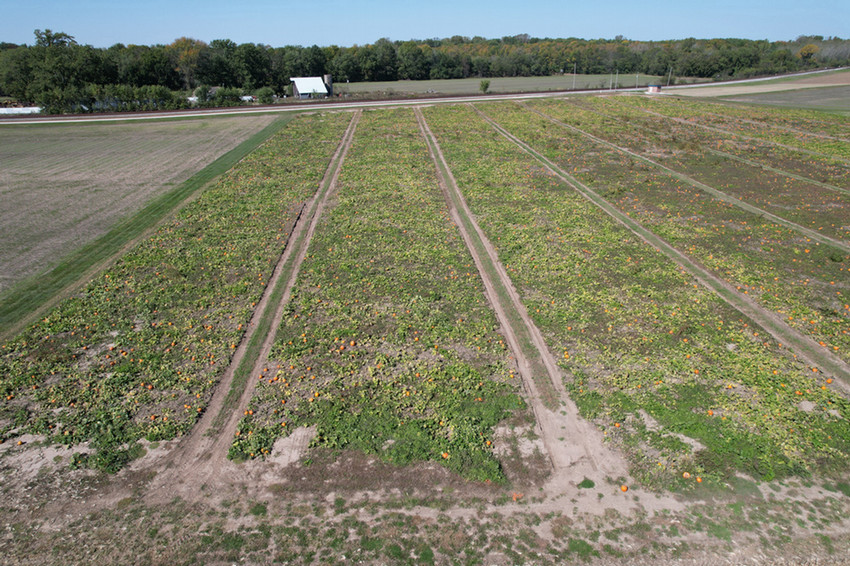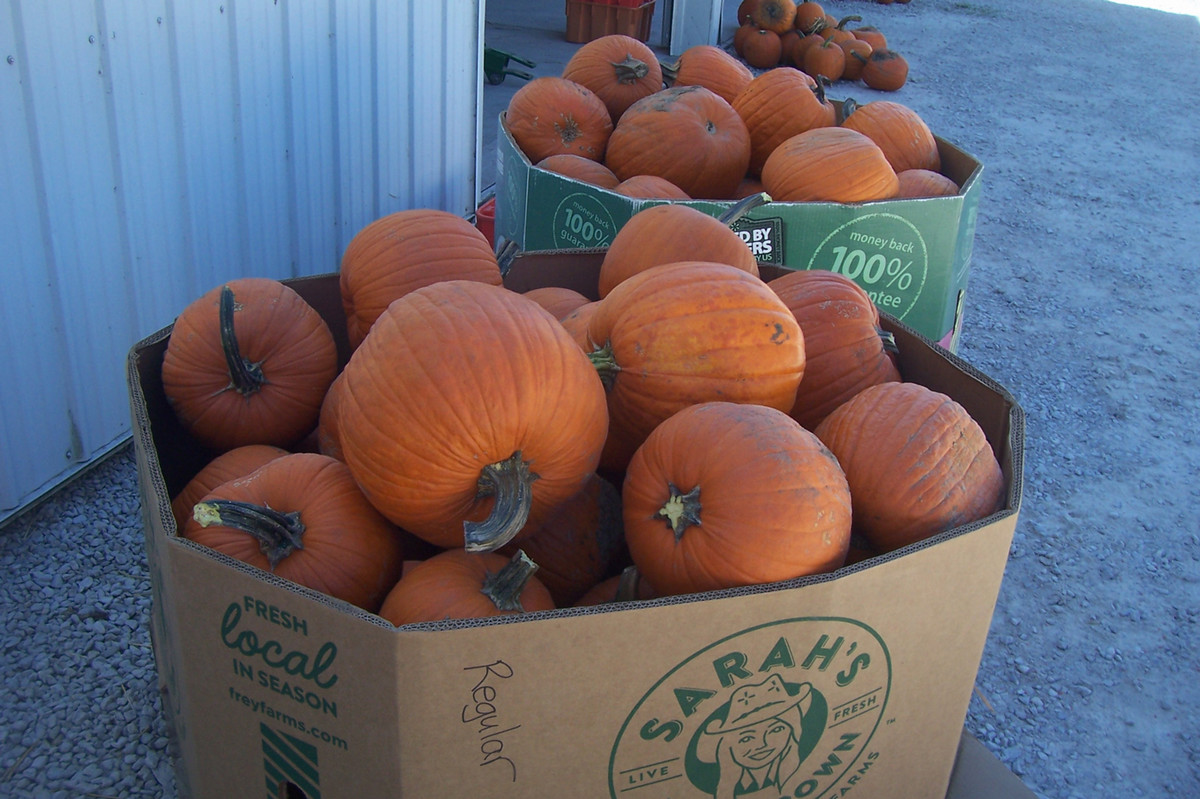Squashing common farming challenges with resilient agriculture
This fall, researchers at the Southwest Purdue Agricultural Center (SWPAC) have turned their attention to pumpkins, harvesting a nine-acre plot of the Bayhorse Gold variety provided by Rupp Seeds. Known for their vibrant orange color and elongated dark handles, these pumpkins are a part of a study in resilient agriculture designed to help growers navigate environmental, economic, social and institutional challenges.
This year marks the first in a long-term commercial-scale research study beginning at many of our Purdue Agricultural Centers. While the project primarily focuses on field crops like corn, soybeans and occasionally wheat, two of our farms will focus on specialty crops as they are an important component of Indiana Agriculture.” -Laura Ingwell, assistant professor of fruit and vegetable pest management in Purdue’s Department of Entomology
The advantages of resilient agriculture lie in its ability to help farmers withstand various perturbations throughout the growing season – drought, excessive rainfall, heat and pest pressures. According to Y. Buitenhuis et al. (2020), "the resilience of a farming system is its ability to manage change by responding and adjusting itself, while maintaining essential functions." Ingwell adds, “The key is how well the crop can buffer the environmental stressors without farmers having to intervene with synthetic measures.”
When planting pumpkins, growers often grapple with the choice between conventional and resilient methods. Conventional practices typically involve soil cultivation and the use of black plastic mulch to manage weeds and keep pumpkins clean as they rest on the bed. However, Ingwell points out that “pumpkins are vining crops that often move off the bed and into the bare soil between rows.”
Purdue researchers have opted for a more resilient practice widely adopted by many growers: planting cereal rye as a cover crop and terminating it in the spring. This strategy creates a thick layer of rye stalks, similar to straw, providing a protective cover for direct seeding the pumpkins. With pumpkin seedlings being quite vigorous, they can easily grow through this dense layer of rye biomass.
This strategy minimizes soil disturbances, creates a barrier to suppress weeds and keeps the pumpkins clean, some of the key reasons why cover cropping and reduced tillage has been adopted by farmers more quickly in pumpkin compared to other cropping systems.” -Ingwell
Researchers at SWPAC have also integrated clover into the rye strips on one side of the plot to provide forage for pollinators before the pumpkins are ready to flower. Cover crops not only improve insect biodiversity, but also water management and soil health. They preserve soil structure through the incorporation of living material and growing roots, which support a diverse microbial community and naturally aerate the soil, as opposed to cultivation which is the conventional method to combat soil compaction. With biomass on the soil surface and healthier soils, water flows more evenly and is quickly absorbed, preventing moisture from pooling around the fruit.
“For farmers with pumpkin patches open to visitors, walking on a straw layer makes the experience much cleaner,” explains Ingwell. "Visitors can pick up pumpkins without worrying about mud being stuck to them – they’re essentially being grown on a blanket.”
Despite the focus on minimizing synthetic pesticides, effective disease management relies heavily on monitoring and protective fungicide applications. However, the SWPAC team remains optimistic that by reducing tillage and maintaining thick cover crop stands over multiple seasons, they can decrease the active weed seed bank in the field.
For insect management, the team at SWPAC chose not to spray any insecticides, yet still achieved a great pumpkin yield, which was harvested by local farmers and reached the market just in time for pumpkin-carving. The lack of pesticides is an ideal outcome for growers using resilient agriculture methods.
Following this season, the pumpkin field will transition to a rotation of field crops. Ingwell explains, “In the world of specialty crops, those grown on a large acreage are typically rotated with field crops. So, pumpkin growers will rotate their fields to corn and soybean, returning to pumpkins two or three years later. This rotation is key for disease management, as soil borne diseases can devastate cucurbit production.”
There’s still much for pumpkin growers to learn when thinking about enhancing the resilience of their farming practices.
It can be challenging to promote a transition that takes time to show results, especially when growers may have rocky periods along the way. Ultimately, the goal of this project is to quantify key factors like soil health, water retention, pest dynamics and changes in weed communities overtime so that farmers have a better understanding of the time commitment it takes and the tools needed to manage challenges when they’re first transitioning into the system.” -Ingwell








